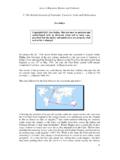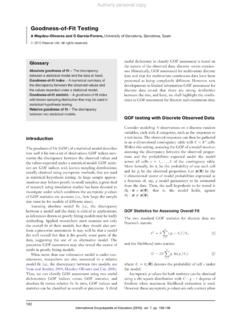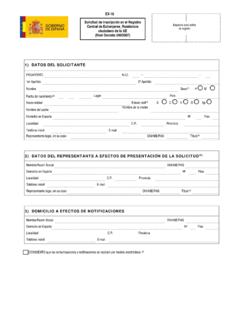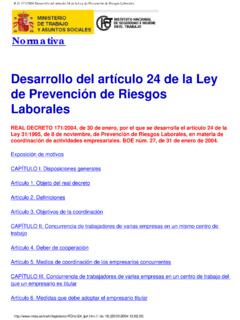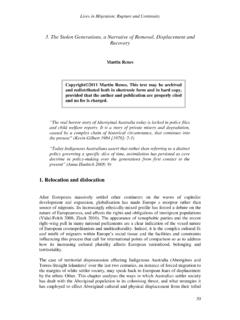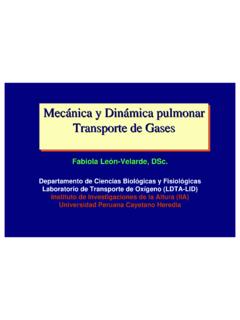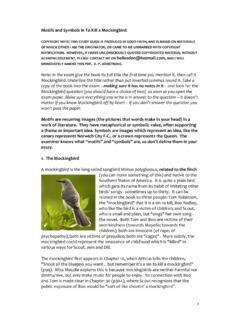Transcription of Fundamental aspects of the nucleic acid i-motif structures
1 Fundamental aspects of the nucleic acid i-motif structures S. Benabou,a A. Avi ,b R. Eritja,b C. Gonz lez c and R. Gargallo a* a Department of Analytical Chemistry, University of Barcelona, Mart i Franqu s 1-11, E-08028 Barcelona, Spain. b Institute for Advanced Chemistry of Catalonia (IQAC-CSIC), CIBER-BBN Networking Centre on Bioengineering, Biomaterials and Nanomedicine, Jordi Girona 18-26, E-08034 Barcelona, Spain. c Institute of Physical Chemistry Rocasolano , CSIC, Serrano 119, E-28006 Madrid, Spain. ABSTRACT The i-motif structure is formed in cytosine-rich sequences, being its building block the cytosine cytosine+ base pair.
2 This structure is particularly stable at pH values below the physiological one (~ ) and, because of that, it has not attracted as much biological interest as other non-canonical structures such as the G-quadruplex. Nowadays, the proposal of potential roles in vivo, as well as nanotechnological applications, has produced an increasing interest in its study. In this context, the present work provides an overall picture of the i-motif structure . Those aspects related with their formation and stability, such as chemical modifications or the interaction with ligands, are discussed.
3 Special attention has been made to the i-motif structures that could have a hypothetical role in vivo, such as those present near the promoter region of several oncogenes. INTRODUCTION Recent genomic research has revealed that around 98% of biological DNA is comprised of non-coding regions, such as regulatory elements, introns, repeat sequences and telomeres, among others. Many types of non-coding DNA sequences have important biological functions, including the transcriptional and translational regulation of protein-coding sequences. Other non-coding sequences have likely, but not yet determined, functions.
4 These non-coding regions often comprise repetitive sequences that are patterns of nucleic acid sequences (DNA or RNA) that occur in multiple copies throughout the genome. The most common DNA structure under physiological conditions is the B-DNA, which is a right-handed double helical structure with Watson-Crick base pairing. However, repetitive DNA sequences have the potential to fold into non-B DNA structures such as hairpin or left-handed Z-form under certain experimental conditions. Since the non-B DNA-forming sequences may induce genetic instability and, consequently, may cause human diseases1, the molecular mechanism for their genetic instability has been investigated extensively.
5 G-rich sequences are able to fold into a non-B-DNA structure known as G-quadruplex. In vitro studies have determined the conditions at which the G-quadruplex may be formed and the spatial arrangement of bases in it. Because the fact that, at the physiological conditions of temperature, pH and ionic strength, G-quadruplex structures are stable, it must be expected the formation of these structures in vivo. In fact, evidence for the formation of G-quadruplex structures in the genome of mammalian cells by using appropriate ligands in a cellular context has been described recently2 4.
6 C-rich regions have also the ability to form a folded structure known as i-motif (also named i-tetraplex or i-DNA) 5,6. This structure is the only known DNA structure that consists of parallel-stranded duplexes held together through intercalated base pairs. Other structures , such as B-DNA or G-quadruplex are spatial arrangements of DNA strands held together by means of stacked base pairs. Unlike G-quadruplex, the formation of i-motif structures requires C base protonation to form the C C+ base pair. In vitro studies have shown that i-motif structures are stable at pH values lower than 7 at the physiological conditions of temperature and ionic strength.
7 However, its stability is very low at neutral and basic pH values. Because of this, the hypothetical role of the i-motif structure in biological processes is uncertain and, consequently, much more effort has been done in the study of other non-canonical structures such as the G-quadruplex. In the last years, however, the sensibility of i-motif formation to narrow pH changes boosted the study of potential uses of this structure in the development of sensors and motors at nanoscale 7,8. Finally, the isolation of proteins that specifically bind to C-rich sequences prompted again the study and discussion about its hypothetical biological role.
8 Few works have been devoted to review the advances in knowledge of the structure and solution properties of i-motif structures , including their potential role in vivo. Gilbert and Feigon included a section about the i-motif in their review about multistranded DNA structures 9. The focus was mainly put on some striking features of a few structures previously determined by means of NMR or X-ray studies, like the parallel disposition of flanking base pairs on the i-motif core. The first review focused on the i-motif structure was published 14 years ago 10.
9 In that work, the latest discoveries about this structure in human telomeric and centromeric sequences, as well as the isolation of proteins that bind specifically to C-rich sequences were discussed. The role of non-B-DNA structures , such as G-quadruplex or i-motif structures , as potential regulatory elements in transcription has been discussed recently 11. It has been proposed that negative supercoiling may favour the formation of single strands in local unwounded regions of DNA. These single strands may form non-B-DNA structures which could play a role in the transcription regulation.
10 This hypothesis is based on several evidences. First, the fact that most of the G-rich and C-rich sequences are in close proximity to the transcriptional start site suggest a role in transcription. In fact, ~43% of promoter regions in genes have the potential of form at least one G-quadruplex structure and hence, one i-motif structure . Second, the existence of proteins and ligands that recognize specifically the G-rich or C-rich regions suggest a role in transcription modulation. Third, the relatively low diversity observed among G-rich sequences in promoter regions suggests a conserved biological role.
